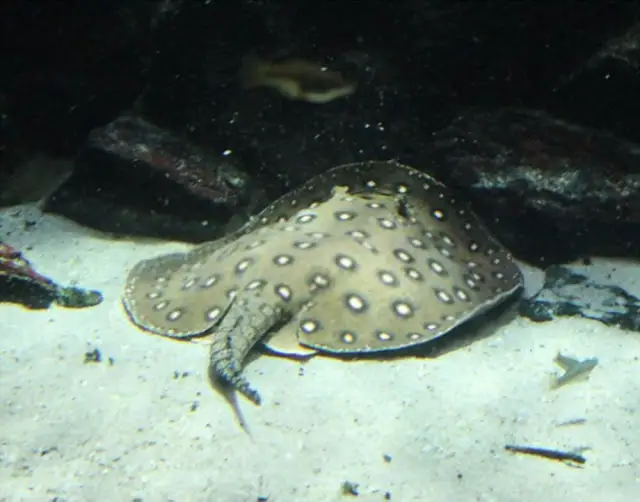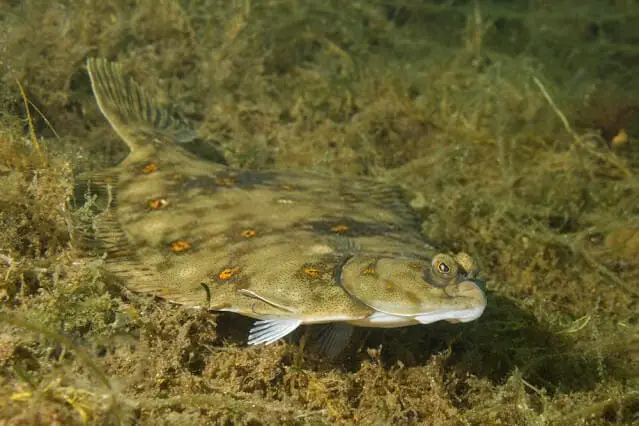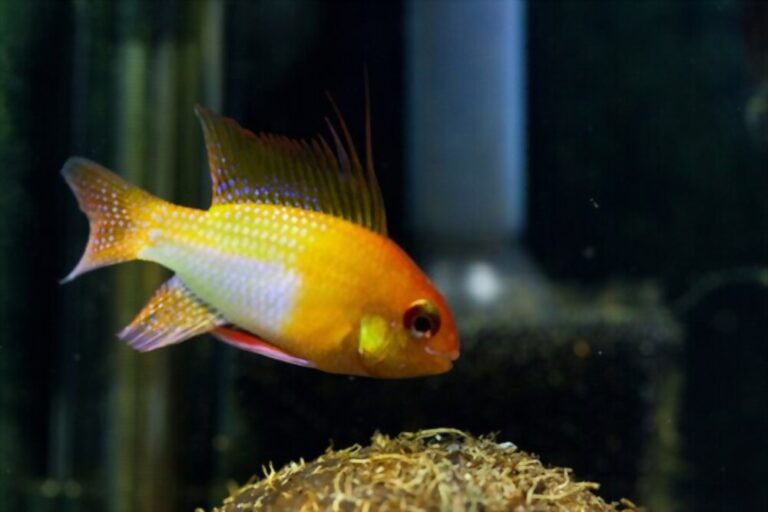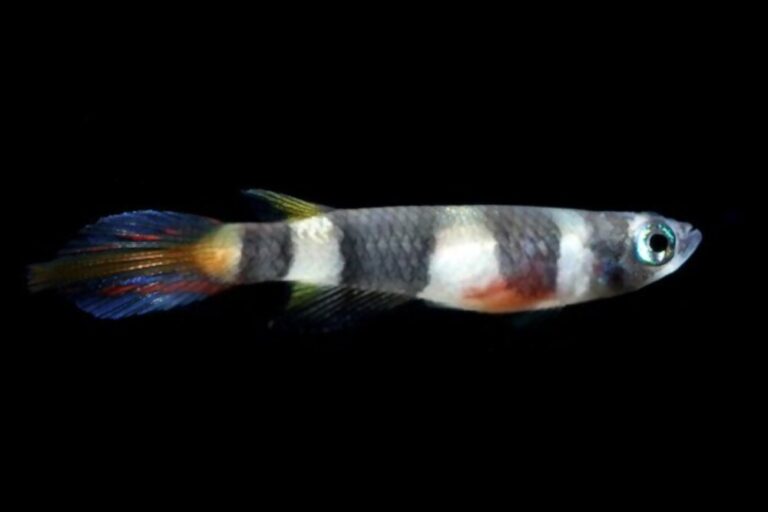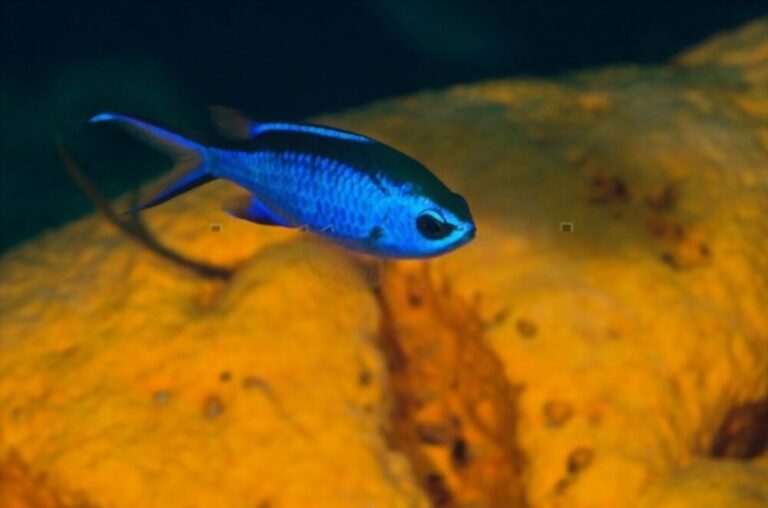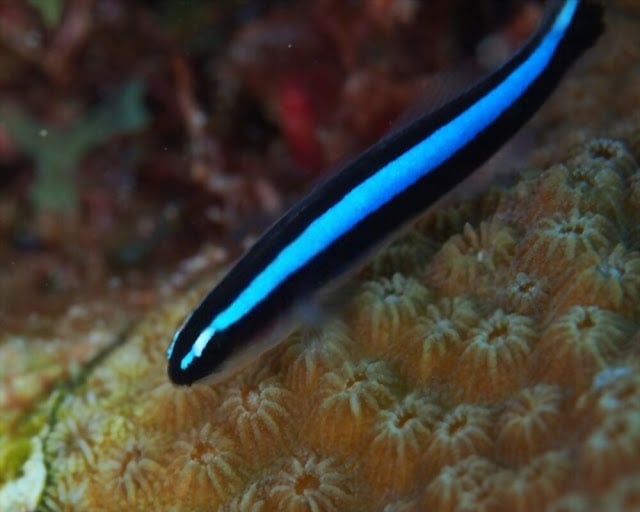Catalina Goby: Size, Lifespan, Feeding, and Tank Mates
Catalina goby fish’s common name is given because a major part of its distribution in the eastern pacific is present on Catalina Island’s coasts. It is also commonly known as blue-banded goby fish.
Mostly, the marine water aquarium owners all over the world own tropical fish aquariums. But, this is not the fish for warmer aquariums.
So, putting them in the tropical fish tank is never a good idea. Otherwise, it is an easy fish to keep if the provided conditions are met ideally.
The Catalina gobies are hermaphrodites, with males being larger than the females, and they can change their sexuality whenever needed.
Size of Catalina Goby
Catalina goby is a small fish, and it is a micro-carnivore. It is rightfully so because it is a tiny fish and reaches a maximum length of about 2.5 inches.
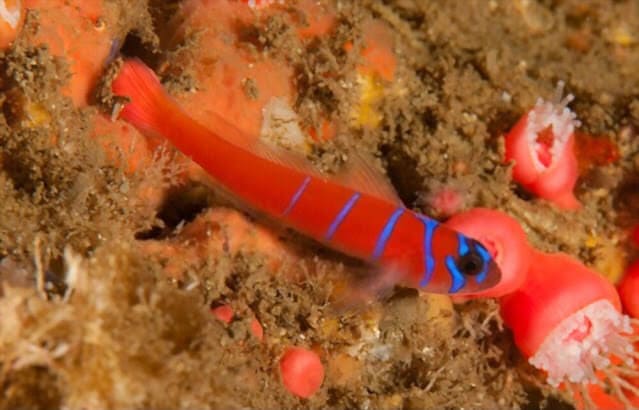
It is such a small fish that it never leaves contact with its territorial surface and remains confined to the reef’s surface within its territory.
Otherwise, it would be washed away with strong water currents. The aquarium is mostly seen perching on some rock and darting in and out of its home.
Despite the micro size, it has striking beauty and is a great addition to the tank. The first half of its body is bright red, and the second half is not as bright as the first one. The blue mask on the face and vertical stripes increase their beauty.
Lifespan
The average life expectancy of this fish is 2 years. The aquarists have many complaints that take up the Catalina gobies for the first time that their fish dies before reaching half of its age.
Here we tell you why. As we have discussed previously, this is subtropical fish, and you should avoid keeping it in tropical fish aquariums. It cannot acclimate to the warmer conditions.
As a result, it significantly drops its lifespan due to stress. If you maintain the favorable temperature range and the conditions are correct, you can expect this fish to live up to 3 years or more.
Life cycle
Catalina goby’s life cycle is a series of intervals that includes fertilization of the eggs, hatching of the fry, and their complete development until their sexual differentiation.
Furthermore, sexual differentiation and the pairing process also go through different stages, establishing dominance and developing a territorial behavior.
As they grow, they pair off based on their size. The larger fish in the pair would become male.
If any of the fish in the pair dies, then the other partner may change its sexuality in another pair off.
When it comes to spawning, the male would act as a leader and guide the female to the spawning spot. The male will also guard the eggs until they hatch.
Catalina Goby Care
The first thing that is essential for Catalina goby is providing them with an optimal temperature range.
As mentioned previously, they can not survive for a long time in a warm water aquarium.
It is a cold water inhabitant and needs to be placed with other subtropical fishes in relatively cold marine water aquariums.
The optimal temperature range for the Catalina gobies is 18-22 degrees Celsius.
Being marine fish, the carbonate hardness should be maintained at 8-12. The specific gravity should be 1.020-1.025.
Filtration and water changes are necessary as they eliminate the nitrates from water. But make sure not to have strong water currents in the tank.
Feeding Catalina Goby
It feeds on the small meaty particles suspended in water and the herbaceous food like seaweed in the wild. While in captivity, it can be fed a variety of meaty marine diets.
The most common meaty diet that they readily accept is a finely chopped Mysis and brine shrimps. They can also be conditioned to eat pellets and flake foods.
Catalina Goby Tank size
Being a tiny fish, it can be housed in small tanks. The minimum tank size for Catalina goby is 10 gallons, which is a nano-tank.
However, in a community tank, the value of their need for the tank size is not considered. Rather the tank size would be preferred on the needs of larger fishes to be housed.
Tank setup
Setting up the tank for the Catalina goby requires a lot of rockwork. They can easily get frightened and need crevices to hide in as well as sleep at night.
The Filtration and water changes are important to take out the nitrates from the tank.
Catalina Goby Tank Mates
You have to keep in your mind that this fish is not suitable for a warmer fish tank. It means you have to keep them in a cooler fish tank.
So, while choosing the tank mates for Catalina goby, you should select those fishes of the same nature. These fishes are tiny in size, and you can not keep them with big fishes.
Rhino belly, Blue-spotted jawfish, Hula fish, and Ventralis Anthias can be good tank mates for your Catalina goby.
Also, this is a fairly social fish so you can keep a group of Catalina gobies.
Zebra Catalina Goby
Zebra Catalina goby is the most prominent and eye-catching species among all other 20 genera Lynthrypnus. It is also commonly known as Manybanded goby fish.
Zebra Catalina goby has numerous thick lines that run vertically over the red body. It mainly differs from the blue-banded goby fish with these vertical stripes.
Though the zebra Catalina is not as readily available as the Catalina goby. However, they increase the beauty of the aquarium with their striking beauty and their behavior.
It is really very fascinating to watch this fish doing funny things in the tank. Zebra Catalina goby is very playful and full of fun. It spends most of the time darting in and out of the caves provided in the tank.
Being subtropical, it will tolerate the temperature not more than a narrow range of 20-23.8 degrees Celsius.
It can be regarded as an omnivorous feeder because it feeds on small meaty particles suspended in the water and grassy material in the wild.
You can feed them with the finely chopped meaty diet such as shrimps and the prepared foods for carnivorous fish in captivity.
Flaming Prawn Goby: Care, Feeding & Other Requirements
Conclusion
Catalina goby is a Subtropical fish and resides in relatively cold waters in the eastern Pacific Ocean, where it is distributed from islands of California to the coasts of Peru. Scientifically it is known as Lynthrypnus dalli.
They are not very popular fish in the aquarium trade. The main reason is their subtropical background. Whenever you read a marine aquarium, it usually means a tropical saltwater aquarium, which is relatively warmer.
